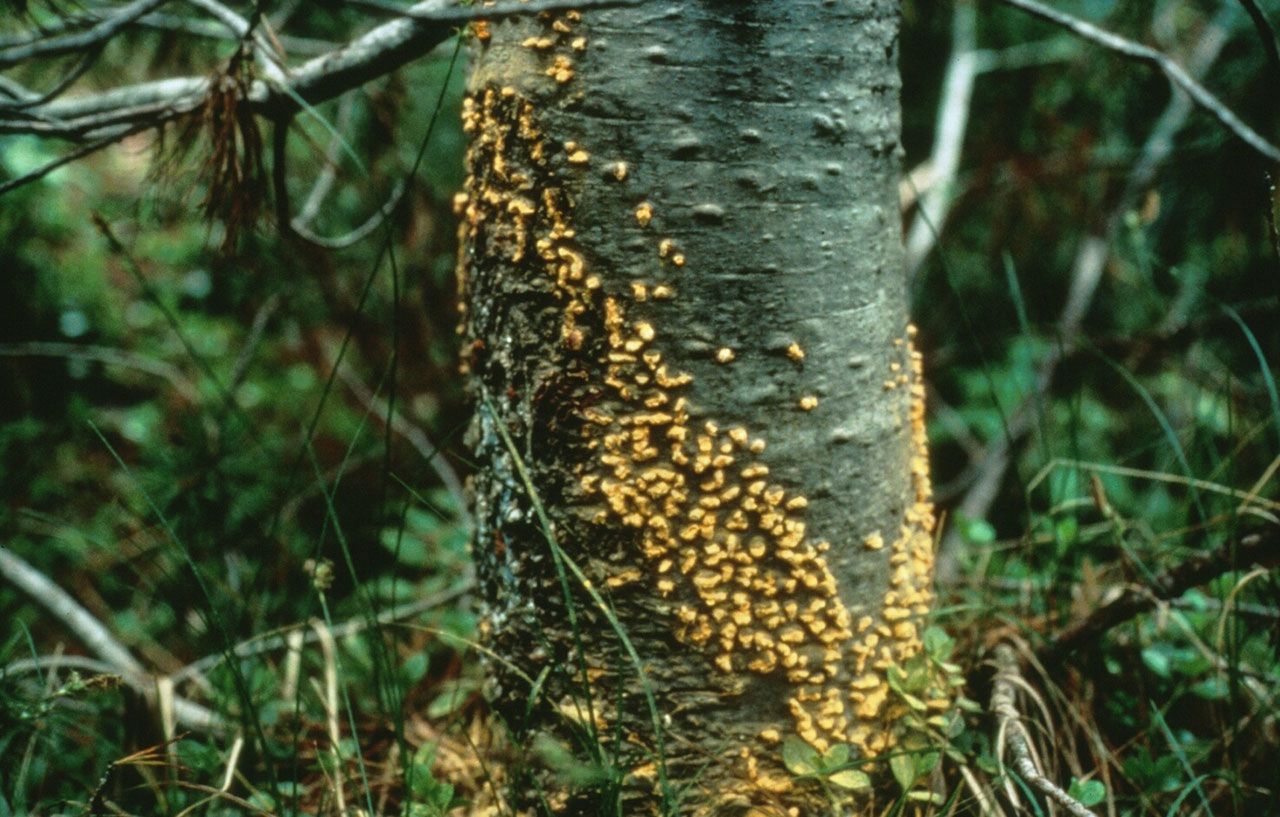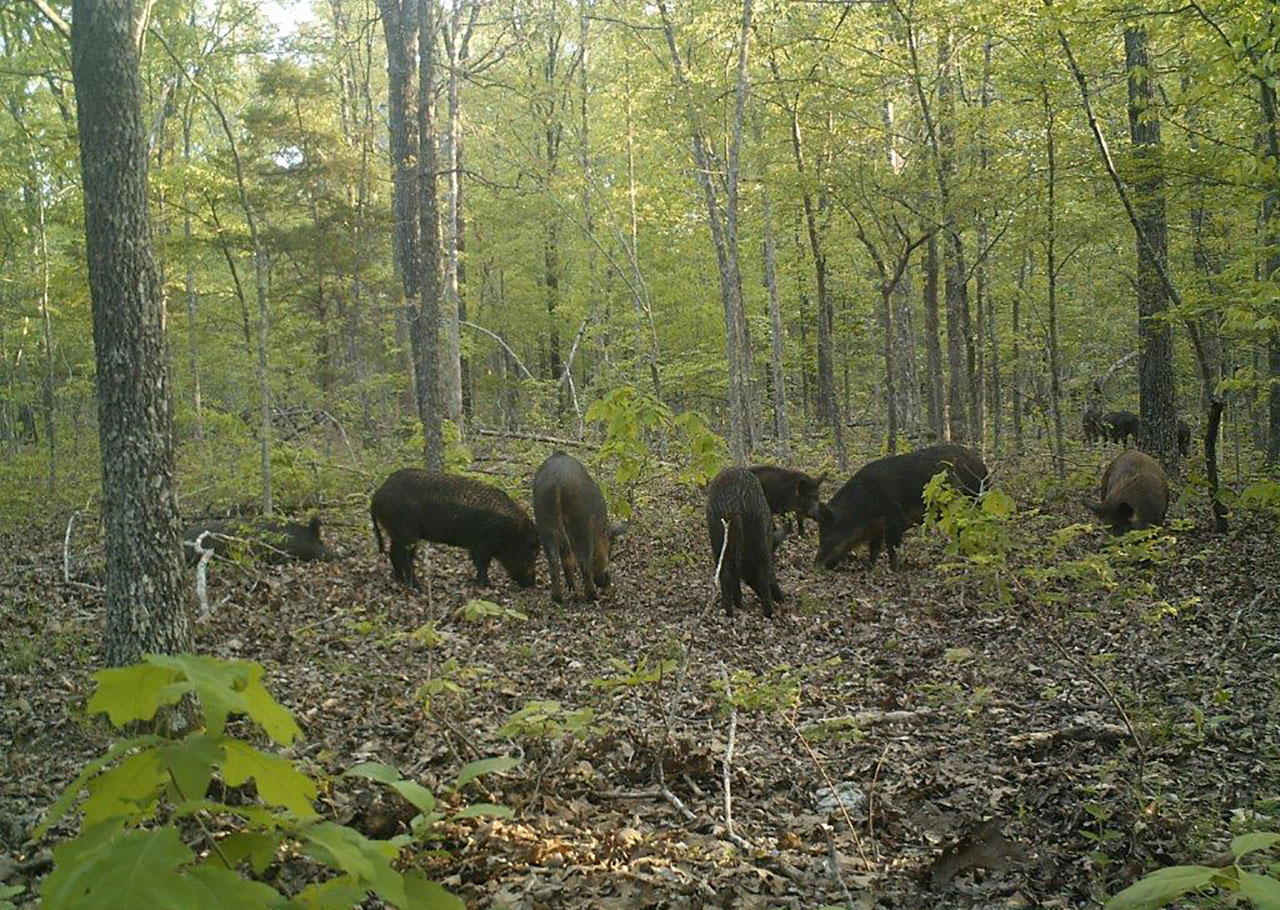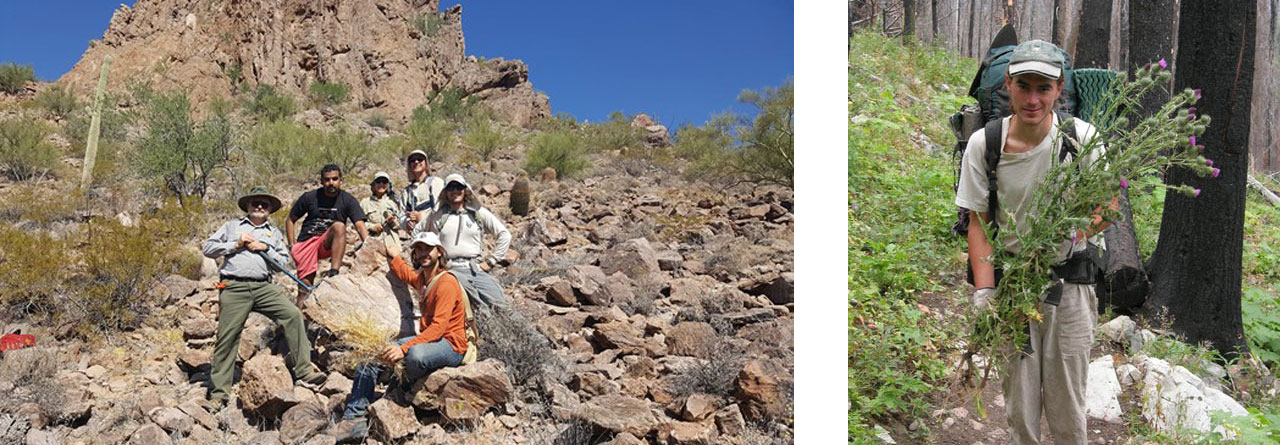Invasive Species & Disease
Devastating Newcomers: Threats to Wilderness from Exotic & Invasive Species & Disease

Above: White bark pint blister rust infection
In the United States, 42% of the species on the Threatened or Endangered species lists are threatened by exotic/alien-invasive species: plants, animals, insects, fungi and pathogens flourishing in an ecosystem in which they did not evolve. They can wreak havoc in these ecosystems by preying on or competing with native species, spreading novel diseases—such as the white pine blister rust, a fungal pathogen introduced to North America from Asia in the early 1900s and threatening native white pines with no innate resistance—or otherwise fundamentally changing habitat and ecological processes.
In a 2001 survey of Fish and Wildlife Service wilderness areas, invasive plants were considered a major problem in 26% of wilderness areas in the lower 48 states, and exotic animals were deemed one of the top ten management priorities in 32% of the wilderness areas surveyed.
In many cases, exotic species were brought to the United States for food, fiber, as game or fur, or as ornamentals, and then spread into natural areas. For example, buffelgrass, a hearty, drought-tolerant grass, was introduced in the desert Southwest in the 1930's as livestock forage. Later, it was used for erosion control and soil stabilization. Today, however, its rapid spread has converted fire-resistant desert into flammable grassland, threatening saguaro cacti and other indigenous species. The Portuguese introduced the faya tree, native to the Azores and the Canary Islands, to Hawaii for both practical and ornamental reasons; it’s now an aggressive exotic displacing native forest trees in the Hawaii Volcanoes Wilderness and elsewhere on the Big Island. Although Arctic foxes are native to Alaska's mainland, they were introduced for fur farming between 1750 and 1950 on more than 450 Alaskan islands, where they threaten native seabirds by stealing eggs.

Above: Invasive feral hogs in wilderness areas in Missouri
Although some invasive species were introduced intentionally, others were accidentally or unintentionally: Norway rats, for example, escaped from ships and also endanger Alaska's island-nesting seabird populations. The Everglades backcountry of the Marjorie Stoneman Douglas Wilderness now infamously plays host to Burmese pythons, a breeding population descended from animals escaped from captivity or—illegally and unwisely—dumped in the wild by pet owners who aren't’t able or willing to continue caring for them. (That’s still an inadvertent introduction of a species, given the intention wasn't to establish a self-sustaining population in the wild—the unfortunate result.) The Asian beetle known as the emerald ash borer was accidentally introduced into the United States in the 1990s (though not discovered until 2002), and now threatens to “functionally extirpate ash with devastating economic and ecological impacts.”
Sometimes exotic species simply coexist with natives, but more often they disrupt entire ecosystems by outcompeting, displacing, sickening, or preying upon native species or interbreeding with native species causing hybridization. For example, intentional stocking of non-native shrimp in the early 1970's caused a series of changes in lakes, eventually displacing nesting bald eagles. In these cases, the effects of invasive species introduction are widespread with invasives altering overall species distribution and composition, nutrient cycling and successional pathways.
As the aforementioned buffelgrass demonstrates, exotics may also fundamentally change disturbance regimes in an ecosystem. A similar example is cheatgrass, or downy brome, a Eurasian native that now infests vast reaches of sagebrush steppe in the Intermountain West (including wilderness acreage), where it promotes hotter and more frequent fires that can reduce or eliminate native sagebrush and negatively impact shrub-steppe species, such as the greater sage grouse.
In addition to the ecological costs of invasive species, the economic damage and control costs from invasive species have been estimated at nearly $137 billion per year.
Invasive Species Control

Invasive species can be eradicated through physical, biological, or chemical means, and the wilderness management agencies are responsible for most monitoring and control programs. Overall, in the 2001 survey of Fish and Wildlife Service wildernesses, control programs for invasive plants exist in 27% of the wilderness areas, for exotic animals in 21%, and for exotic pathogens in 3%. Volunteers are increasingly being used to conduct invasive species monitoring and eradication, however. For example, in 2005 Wilderness Institute Citizen Science Program volunteers helped map 350 weed infestations in Montana wilderness areas. Other volunteer organizations work with the agencies or county extension offices to organize weed pulls.
Prevention, however, is often the best way to protect wilderness from exotic and invasive species. This includes educating wilderness visitors about invasive species, for instance by using posters or other trailhead information materials. Volunteer through the Wild Spotter program to help identify and map invasive species using your mobile devide while on public lands.